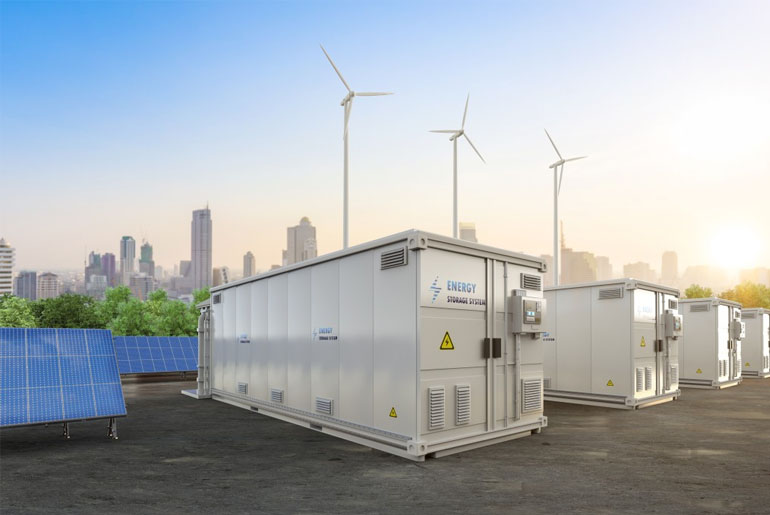As electric vehicles (EVs) become more prevalent, the efficiency, safety, and longevity of their battery energy storage systems (BESS) have become crucial factors. One of the most significant challenges in maintaining the optimal performance of BESS is thermal management. Effective thermal management systems (TMS) are essential for ensuring that batteries operate within their ideal temperature range, thereby maximizing efficiency, safety, and lifespan. This article explores the importance, methods, and advancements in thermal management in BESS for EVs.
The Importance of Thermal Management
- Efficiency: The performance of lithium-ion batteries, the most common type used in EVs, is highly sensitive to temperature. Operating outside the optimal temperature range (generally 20-40°C) can significantly reduce efficiency. At low temperatures, the internal resistance of the battery increases, reducing power output and charging speed. High temperatures can accelerate chemical reactions that degrade battery materials, decreasing capacity and efficiency.
- Safety:One of the critical concerns with BESS is thermal runaway, a condition where excessive heat generation leads to a rapid increase in temperature, potentially causing fires or explosions. Effective thermal management mitigates this risk by maintaining safe temperature levels and preventing hot spots within the battery pack.
- Longevity:Thermal stress is a significant factor in the aging of battery cells. Consistent exposure to high temperatures can cause irreversible damage to the battery’s internal structure, leading to capacity loss and shorter overall lifespan. By maintaining a stable thermal environment, a well-designed TMS can extend the life of the battery, providing better value and reliability for EV owners.
Methods of Thermal Management
Thermal management systems in BESS can be broadly classified into passive and active methods, each with its unique advantages and applications.
- Passive Thermal Management:
Passive systems use materials and design techniques to manage heat without external energy input. This approach includes:
– Thermal Insulation: Materials with low thermal conductivity can be used to reduce heat transfer between the battery and the external environment.
– Phase Change Materials (PCMs): These materials absorb and release thermal energy during phase transitions (e.g., from solid to liquid), helping to regulate temperature by storing excess heat and releasing it when the temperature drops.
– Heat Sinks: Conductive materials that dissipate heat away from the battery cells to prevent localized overheating.
- Active Thermal Management:
Active systems use external mechanisms to control temperature more precisely and are generally more effective than passive methods. Common active thermal management techniques include:
– Air Cooling: Fans or blowers circulate air around the battery pack. This method is simple and cost-effective but may struggle to remove enough heat in high-performance or high-capacity applications.
– Liquid Cooling: A liquid coolant, such as water or glycol, circulates through channels or plates in contact with the battery cells. Liquid cooling provides better heat transfer than air cooling and can maintain more uniform temperatures across the battery pack.
– Refrigerant Cooling: This advanced method uses a refrigerant in a vapor-compression cycle to provide cooling. It is highly effective at removing heat and is used in high-performance EVs but is more complex and expensive to implement.
Advancements in Thermal Management Systems
The rapid development of EV technology has driven significant advancements in thermal management systems, focusing on improving efficiency, integration, and adaptability.
- Integrated Thermal Management Systems: Modern EVs often use integrated systems that manage the thermal needs of the battery, power electronics, and even the cabin climate control. By using a single system to handle multiple thermal loads, manufacturers can reduce weight, complexity, and cost while improving overall vehicle efficiency.
- Smart Thermal Management: Advanced sensors, control algorithms, and machine learning enable more precise and adaptive thermal management. These systems can predict thermal behavior based on driving patterns and environmental conditions, optimizing cooling or heating efforts to maintain ideal temperatures.
- Advanced Materials: The development of new materials, such as high-conductivity thermal interface materials (TIMs) and advanced PCMs, enhances both passive and active thermal management. These materials offer better heat transfer properties and contribute to more uniform temperature distribution within the battery pack.
- Innovative Battery Pack Design: Improved designs, such as modular and flexible configurations, facilitate more effective thermal management. Enhanced airflow, better contact with cooling plates, and efficient heat dissipation structures ensure that batteries maintain optimal performance and longevity.
Conclusion
Thermal management is a critical aspect of battery energy storage systems in electric vehicles. Effective thermal management ensures that batteries operate within their optimal temperature range, enhancing efficiency, safety, and lifespan. As EV technology continues to evolve, advancements in thermal management systems will be essential in addressing the challenges associated with battery temperature regulation. By maintaining a stable thermal environment, these systems not only improve the performance and reliability of EVs but also contribute to the broader goal of sustainable and eco-friendly transportation.

